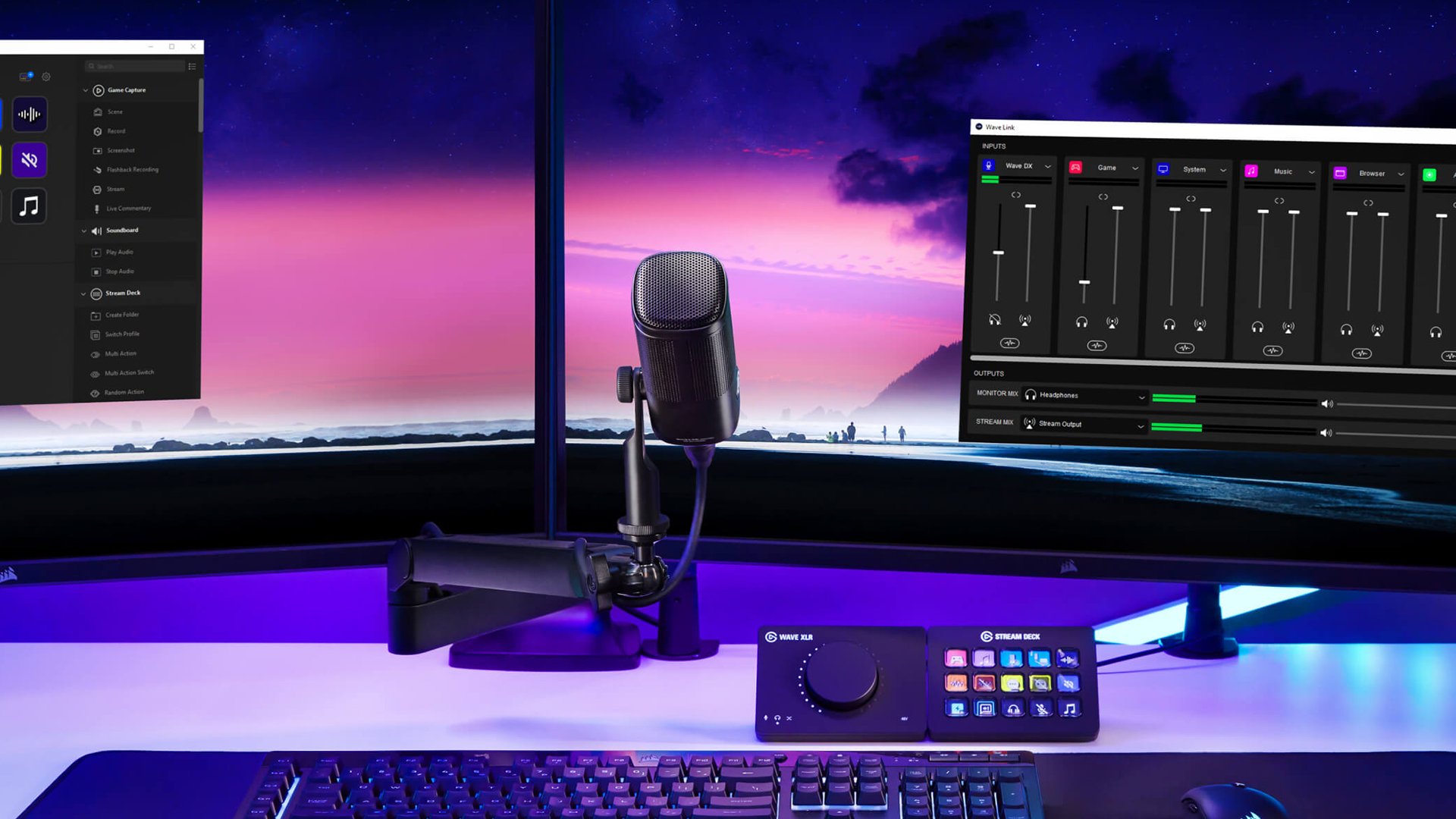Wave DX - Review

For about 8 years I had been using a microphone from Razer, the Seiren X and it had served pretty well. But like all good things time does cause degradation and the quality of the output was not the best and that's where Elgato came in. They had recently released the Wave DX microphone, the latest in their Wave series and I was keen to put it through its paces. So, with a good amount of use I can report that things worked out very well.
The Wave DX is actually the fourth model in the Wave family and while it sports a familiar look, it actually has a few big differences that help it stand out. The first major difference is that this is not a microphone that you can connect via USB, as the Wave DX uses a 3-pin Neutrik connector. If 3-pins and microphones sounds familiar, that is because that is the standard connection method for almost all microphones globally. From those massive concerts that thousands of people attend, to the solo performer in the corner at the local on a Saturday night. This connection does make it a little harder for regular PC users to just pick on up, but it does allow for a much broader range of users, which was likely one of the reasons for it. The other major change here is that instead of speaking to the microphone straight on, like you would with the other Wave designs, this one is designed to be spoken down to, again much like a traditional microphone.
This design choice is actually very clever for two reasons, the first is just aesthetics, because now you won’t have a microphone in front of your face, something almost all other PC microphones do. The second is that the shape of the hardware inside, means that the closer you have the microphone to your mouth, the more accurate of a recording will be obtained. Have you ever watched a singer and thought they look ready to eat the microphone, like it’s an ice cream, there is a reason for it. With less distance between your mouth and the microphone, there is less chance of your voice dispersing, ensuring that what hits the dynamic capsule is everything you said. Thankfully the smart folks at Elgato also added a few special little tricks, so that breathing and other random noises are eliminated, but if you move your head to the side of the microphone, it will still pick up your voice.
Of course, before you can test all that out, you need to connect it to your computer. If you are an audio professional, or enthusiast and you have a XLR enabled mixing board, then you are set, plug the mic in and off you go. For those who don’t have all that extra equipment, then you will need to pick up the Wave XLR box, which lets you control the microphone and more. Across the back of the box there is Neutrik 3-pin connector, a 3.5mm headphone jack and the USB-C port, which is data connection and power source. I found the setup to be very simple and once it was connected to the computer, it was picked up right away. The front of the Wave XLR is where the magic happens, so to speak, with the multifunctional control dial being how you switch between controls and then adjust settings. The icons on the front, along with their little LED, indicate which setting you are on with the third one being the blend of output from your PC and mic, which is great for those streamers to want to ensure a perfect balance. Around the dial are a series of LED’s which help indicate the level your microphone or headset is at, but there is a problem with the box, muting it.
Depending on where you have the box set up, mine is in front of me and sits under my main screen, accessing the mute function can be tricky. The mute button is less a button and more a capacitive sensor, meaning you just touch it to mute and unmute. The problem is that I have to reach up and over the device, which feels awkward and if I am holding a controller, the last thing I want to do is have to let go of it and them fumble behind the box. Now if you are connecting the microphone to a dedicated mixing board, you would obviously like to mute things via the board, so it may not be an issue. I can understand that as a microphone that is designed to appeal to audio professionals as well as PC users, they had to balance the design, but the lack of a physical mute button seems to be issue that is hard pressed to be ignored.
Leaving design choices aside, the Wave DX microphone does deliver on its promise and captures some very clear and crisp audio. Most microphones do very well with a constant volume, so a normal speaking voice, but if you shout or yell, then the mic can get blown out. The same is also true, that if you whisper or move to far away, the microphone will just fail to register the input, which is why there are dedicated ASMR microphones. I didn’t encounter any issues with the Wave DX, now bare in mind I didn’t start shouting for hours on end at it, but when I did speak in a far louder voice than normal, the microphone never showed any issues. The dial on the Wave XLR box also provides a quick way to increase or decrease the volume of the microphone, so if you find yourself getting to ramped up from an intense game, you can lower it with a small turn. While it might not offer up any on device controls, like the other members of the Wave family, it does delivers some of the best recorded audio of any, which is important.
For those seeking to obtain a new microphone for streaming, podcasting or any other PC based use, the Wave DX is one incredible piece of technology. The more traditional use position means that it won’t be in the way of your face, which in the age of streaming is a very welcome design choice, plus couple it with the internal pop shield to help prevent pops and other noise, makes it very user friendly. The need for a XLR compatible control device will be an issue for some and it will raise the price a bit, but the range of uses for it is so vast, it does make up for it. The lack of a physical mute button on the microphone is a let down as you need to keep the Wave XLR box nearby for muting, or whatever other device you are connecting it to. If you are someone who is serious about their audio setup and looking for a microphone that works great on a PC or through a dedicated soundboard, then you can’t go wrong here.
The Score
9.0
Review unit provided by Elgato
The Pros
+Great form factor that keeps the mic out of sight, but never out of range
+The sound quality is fantastic, as the mic picked up every word I said, without issue
The Cons
-The lack of a physical mute button on the mic is a severe oversight
-Being a XLR mic means you need additional equipment to make use of it, which can raise the price up








